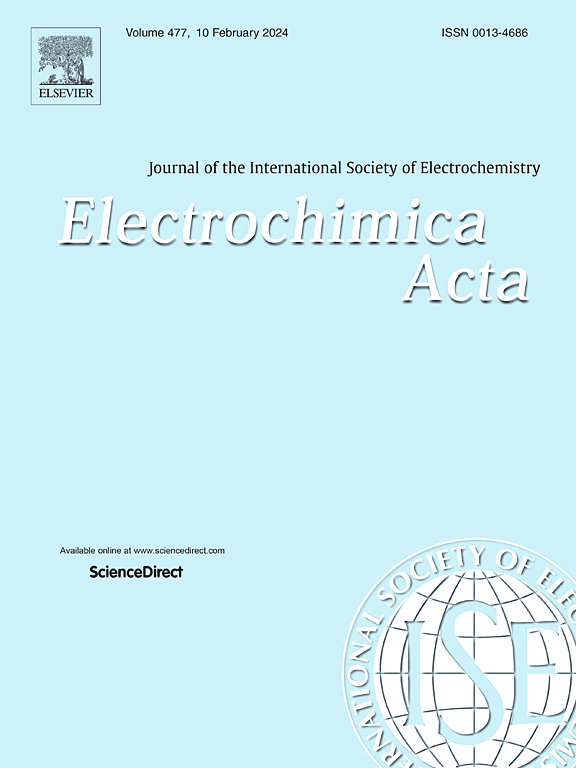Multifunctional interfacial modification layer construction on zinc anode for high-performance zinc metal batteries
IF 5.6
3区 材料科学
Q1 ELECTROCHEMISTRY
引用次数: 0
Abstract
Aqueous zinc (Zn) metal batteries have demonstrated great application potential in large-scale energy storage systems, while the practical implementation is hindered by hydrogen evolution reaction (HER) and dendrite growth on Zn anode to deteriorate electrochemical performance. Interfacial chemical microenvironment reconstruction has emerged as a promising strategy via molecular adsorption layers to enhance the interface stability on Zn anode, but confronts single functionality issues. Herein, multifunctional interfacial modification layer (MIML) was constructed on Zn anode through the introduction of sulfosuccinic acid as electrolyte additive. The dual-carboxyl groups in MIML can be served as robust anchoring sites on Zn anode and effectively facilitate the fast desolvation kinetics through strong coordination effect to hinder HER. Meanwhile, abundant sulfonic acid groups with high ionization capacity enhance the ionic transport ability of MIML to promote uniform Zn2+ deposition and suppress dendrite growth. As a result, Zn anode with MIML can achieve long-term cycling stability of 1600 h and good reversibility under high current density of 30 mA cm-2, as well as Zn-I2 full battery with MIML displays long cycling life of 10000 cycles. This work opens a novel route to design advanced interface with fast kinetics by trace electrolyte additive for high-performance Zn metal batteries. This work paves a new way for constructing multifunctional advanced interfaces on Zn anode via electrolyte additive engineering to enhance the overall electrochemical performance of Zn metal batteries.

高性能锌金属电池锌阳极多功能界面改性层的构建
水溶液锌金属电池在大规模储能系统中具有巨大的应用潜力,但由于析氢反应(HER)和锌阳极枝晶生长导致电化学性能恶化,阻碍了其实际应用。通过分子吸附层重建界面化学微环境是提高锌阳极界面稳定性的一种很有前途的策略,但面临单一功能问题。本文通过引入磺基琥珀酸作为电解质添加剂,在锌阳极上构建了多功能界面修饰层(MIML)。MIML中的双羧基可以作为Zn阳极上的稳健锚定位点,通过强配位效应阻碍HER,有效促进快速脱溶动力学。同时,丰富的高电离能力磺酸基团增强了MIML的离子传输能力,促进Zn2+均匀沉积,抑制枝晶生长。结果表明,在30 mA cm-2的大电流密度下,使用MIML的Zn阳极可以实现1600 h的长期循环稳定性和良好的可逆性,并且使用MIML的Zn- i2全电池具有10000次循环的长循环寿命。本研究为利用微量电解质添加剂设计高性能锌金属电池具有快速动力学的高级界面开辟了一条新途径。本研究为通过电解质添加剂工程在锌阳极上构建多功能高级界面,提高锌金属电池的整体电化学性能开辟了新途径。
本文章由计算机程序翻译,如有差异,请以英文原文为准。
求助全文
约1分钟内获得全文
求助全文
来源期刊

Electrochimica Acta
工程技术-电化学
CiteScore
11.30
自引率
6.10%
发文量
1634
审稿时长
41 days
期刊介绍:
Electrochimica Acta is an international journal. It is intended for the publication of both original work and reviews in the field of electrochemistry. Electrochemistry should be interpreted to mean any of the research fields covered by the Divisions of the International Society of Electrochemistry listed below, as well as emerging scientific domains covered by ISE New Topics Committee.
 求助内容:
求助内容: 应助结果提醒方式:
应助结果提醒方式:


